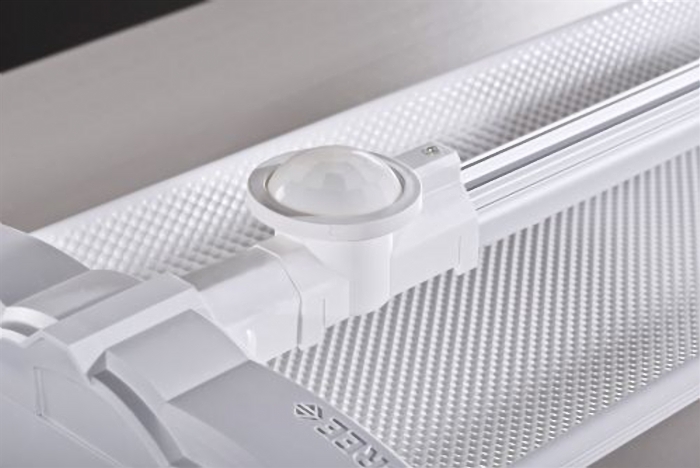Cree launches autonomous controls technology for LED lights
17-03-2014Cree has announced the SmartCast lighting controls technology including LED lights equipped with occupancy and ambient light sensors, dimmer switches, and a TV-remote-control-like configuration tool. A 2.4-GHz wireless mesh network connects the SmartCast system elements, and LED lights and switches automatically form network groups based on proximity. Cree says SmartCast can deliver 40% in energy savings over and above the efficiency advantages of LED lights.

The SmartCast technology is designed to automatically realize occupancy sensing and daylight harvesting. The platform can turn off lights automatically in unoccupied spaces or dim lights when natural sunlight is present.
While the lighting industry is rapidly moving to solid-state lighting (SSL) technology to leverage reduced energy consumption, Cree said controls could offer far greater savings but are only occassionly used. Product develpment manager Tom Hinds said about 2% of commercial buildings have daylight sensors installed, and about 1% have control systems. Hinds said, "We feel cost and complexity is the biggest obstacle to application."
Hinds said SmartCast is the industrys first self-programming wireless lighting system. A new or retrofit installation simply involves installation of the LED light that have integrated sensors and wireless capabilities, and the installation of Cree dimmer wall switches that require a 3-wire combination where both hot and neutral wires are run to the switch. Most commercial spaces include three wires in the switch boxes whereas some homes have only the hot wire run through the switch.
Once installed, the Cree dimmer switch no longer controls the power supplied to one or more LED lights in a room. Those LED lights are still connected to the AC power, but the control information is passed wirelessly. Cree uses a wireless network that is similar to and in the same frequency band as the ZigBee wireless network but has some Cree proprietary elements in the protocol.

Once a group of SmartCast kits is installed within a room, operation requires the push of a single button on the remote control. The remote first recognizes the LED lights and switches in the room and assigns addresses to each node. The LED lighting kits then power on and go through a self-calibration process in which each LED lightprogresses through a quick sequence of light-level transitions, one at a time, so other lights in the space can recognize the active LED light using the integrated light sensor.
While the network elements do automatically form into groups, you can manually delete a light from a group or add one using the remote control. You can also change settings such as the length of time lights remain on, or occupancy duration, after a person leaves a space.
Cree will offer SmartCast technology initially on its CR Series recessed troffer fixtures, CS Series of linear fixtures designed for pendant or surface mounting, and KR Series of recessed downlights. Cree will also offer a SmartCast-enabled 0-10V module that can be used to connect other dimmable fixtures into a SmartCast group.
Cree has already installed the SmartCast technology in its own facility and also in projects near its Durham, North Carolina headquarters. Both Lord Corp and North Carolina State University have the technology up and running.
"Cree exceeded our expectations of what a lighting controls system could provide," said John Gardiner, facilities manager at Lord. "Without any extra devices or wires needed, our maintenance team spent only minutes installing the Cree CR22 architectural LED troffers with SmartCast Technology throughout our corporate headquarters, saving us thousands of dollars on programming and setup. The savings on energy consumption and maintenance costs we expect with this installation will be a huge benefit to our business."
Cree believes there is a huge potential undeveloped market for controls. The company estimates that in the US alone controls deployed in all commercial spaces would deliver $12 billion annually in energy savings. And the company said the SmartCast system would deliver 70% total savings relative to a fluorescent system without controls while costing 50% of typical control systems on the market.
About the announcement, Hinds said, "Cree set out to show the industry that you can install controls simply and economically." For now Cree would not comment on any possibility of licensing the SmartCast technology for use by others. But the closed nature of the system could lead some specifiers to evade the technology with what has been a clear trend toward open standards by leaders in the LED lights industry.
However, Cree does offer the aforementioned interface modules that can work with any 0-10V lights. Moreover, SmartCast is only one of a number of controls technologies that Cree supports. For example, the company offers support for the Lutron EcoSystem, with many of its lights and DALI (digital addressable lighting interface) supported as well.


